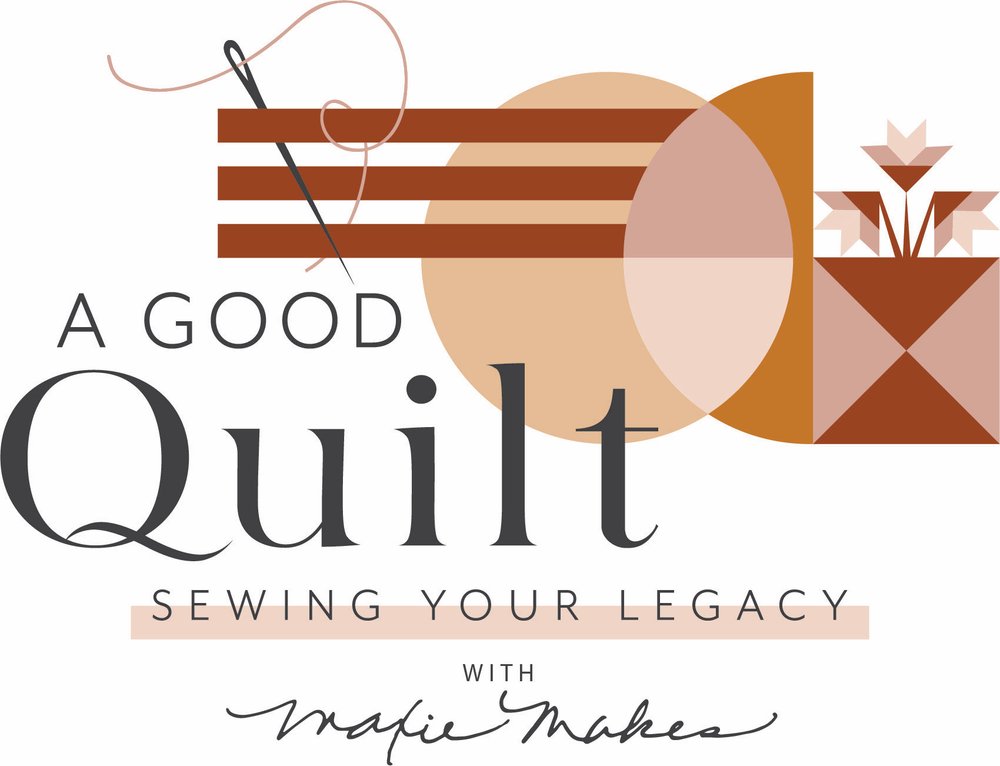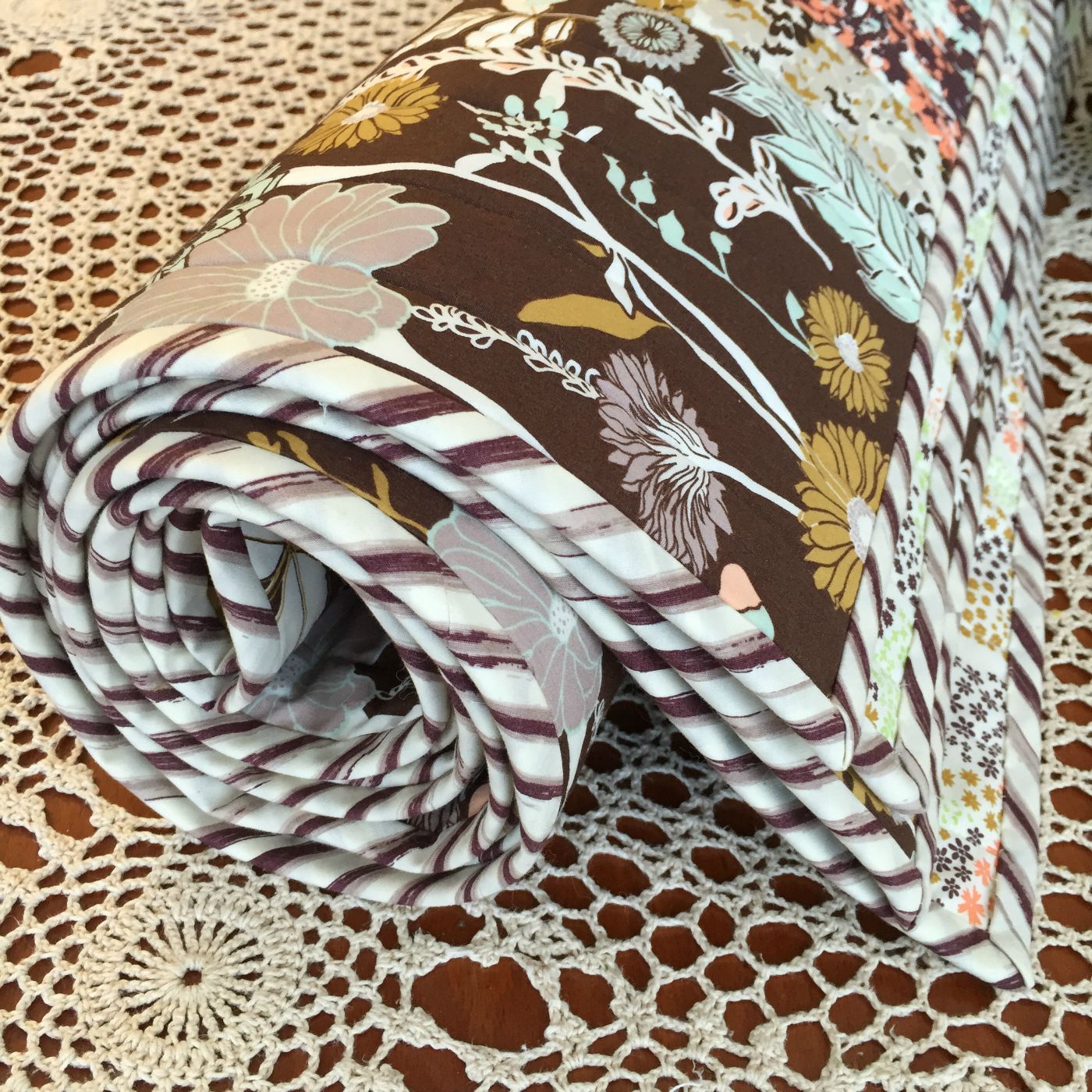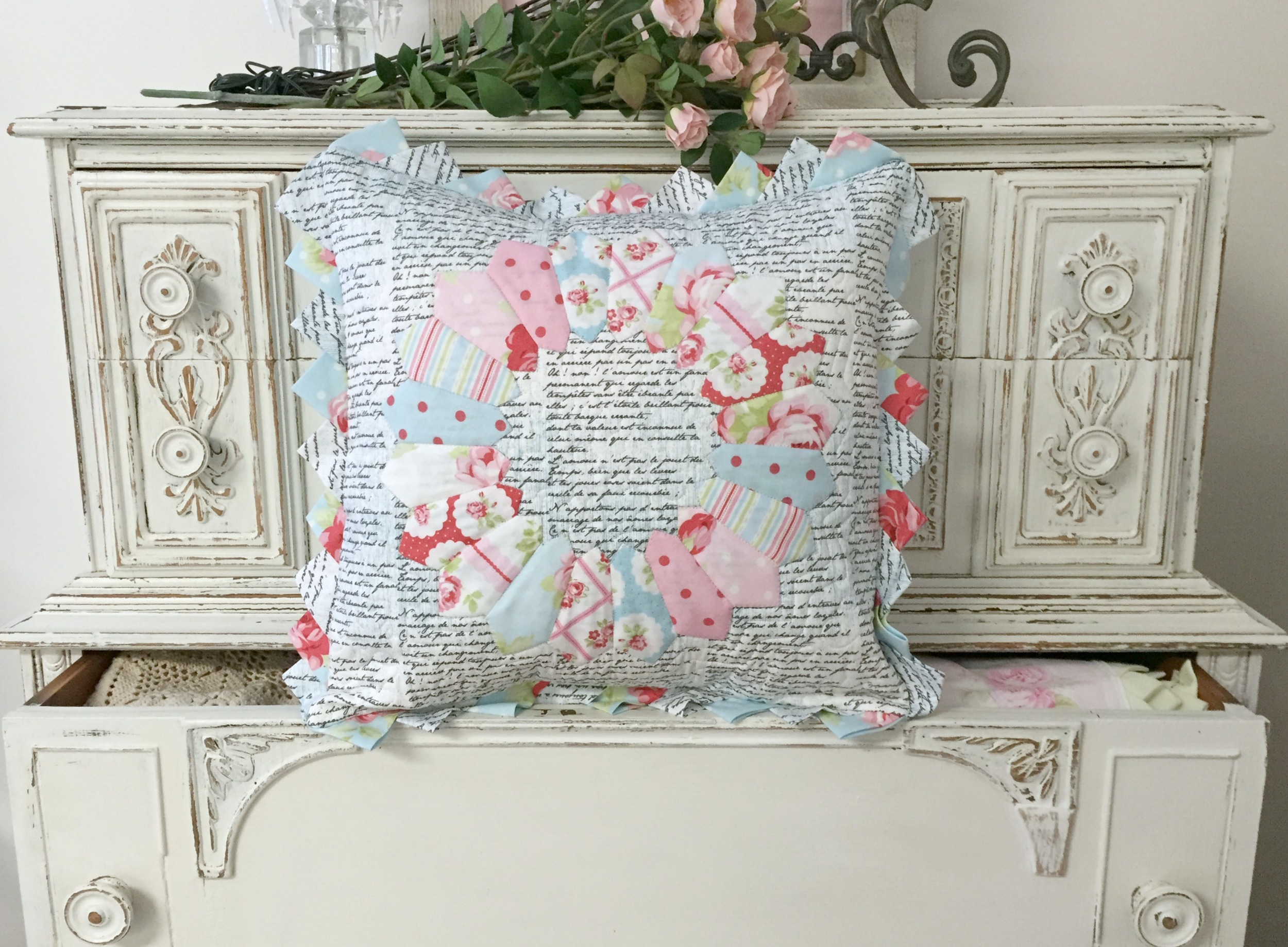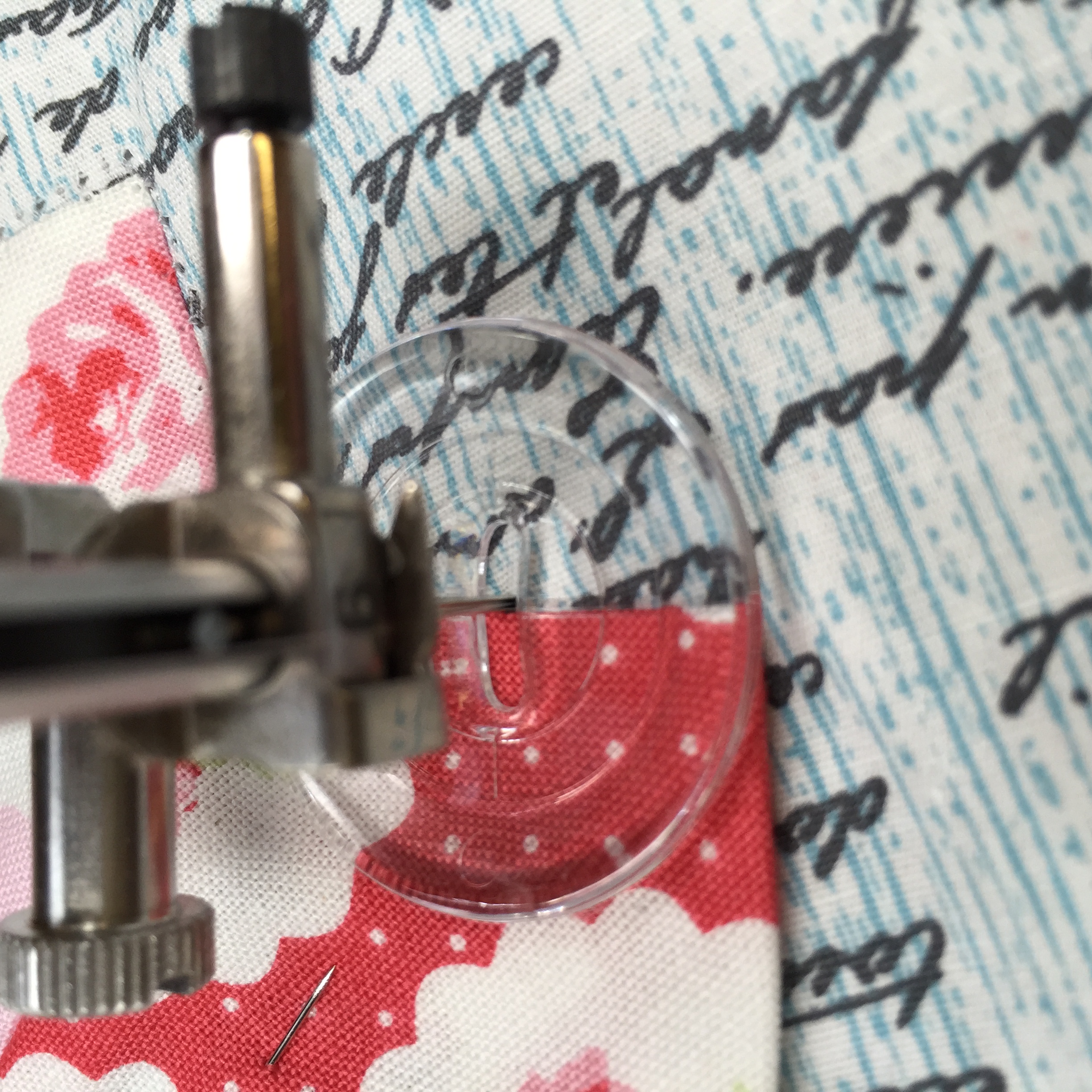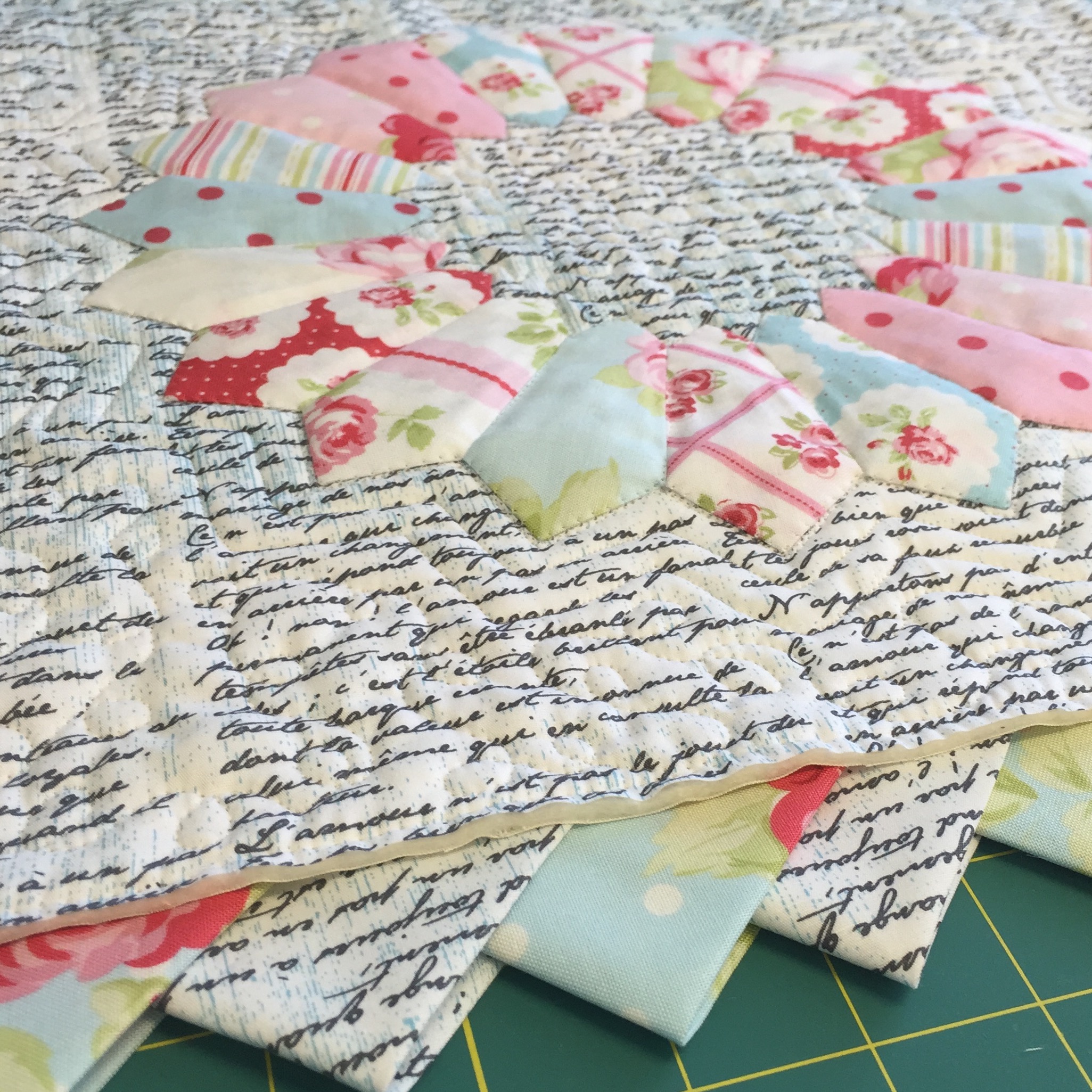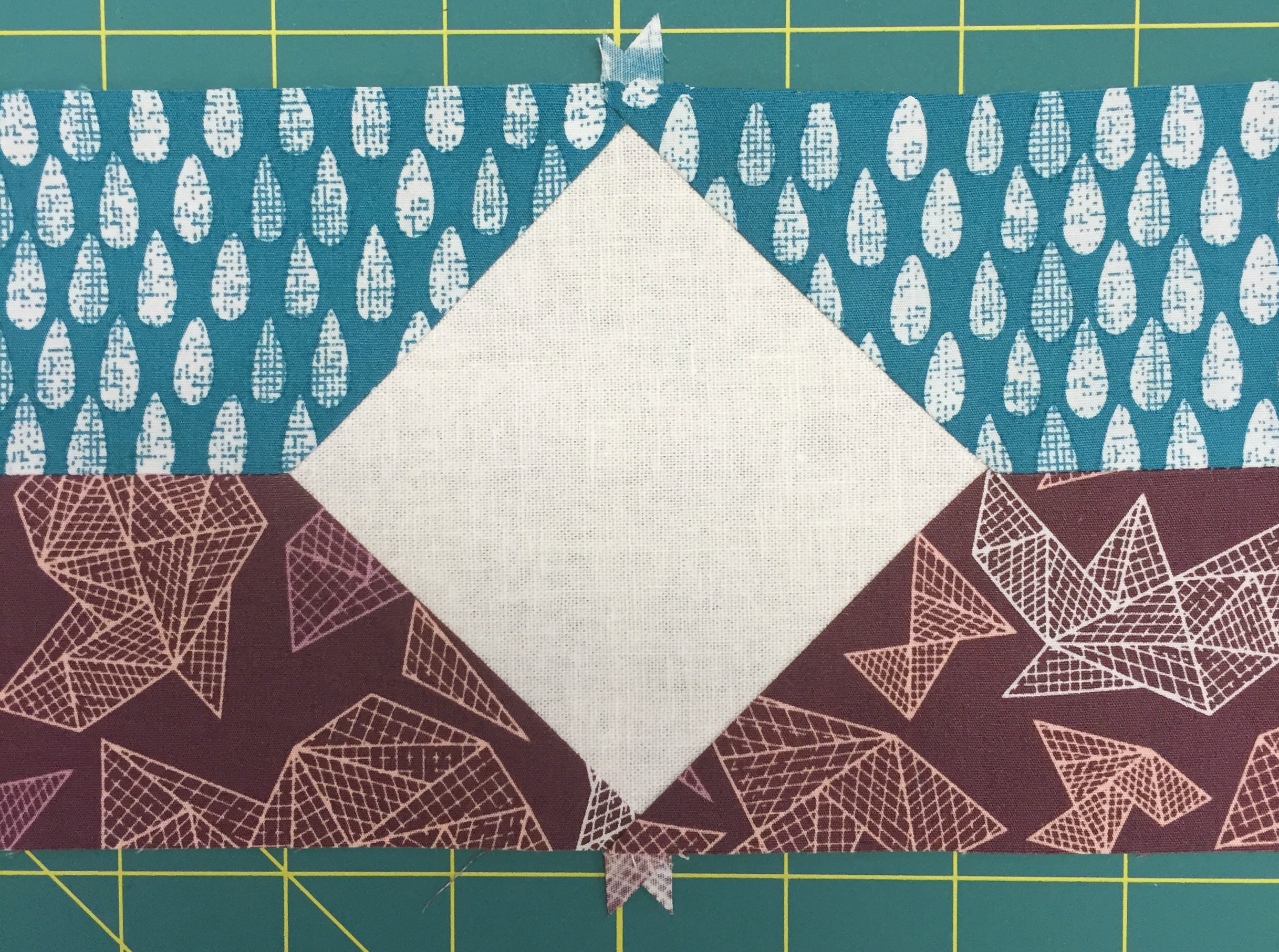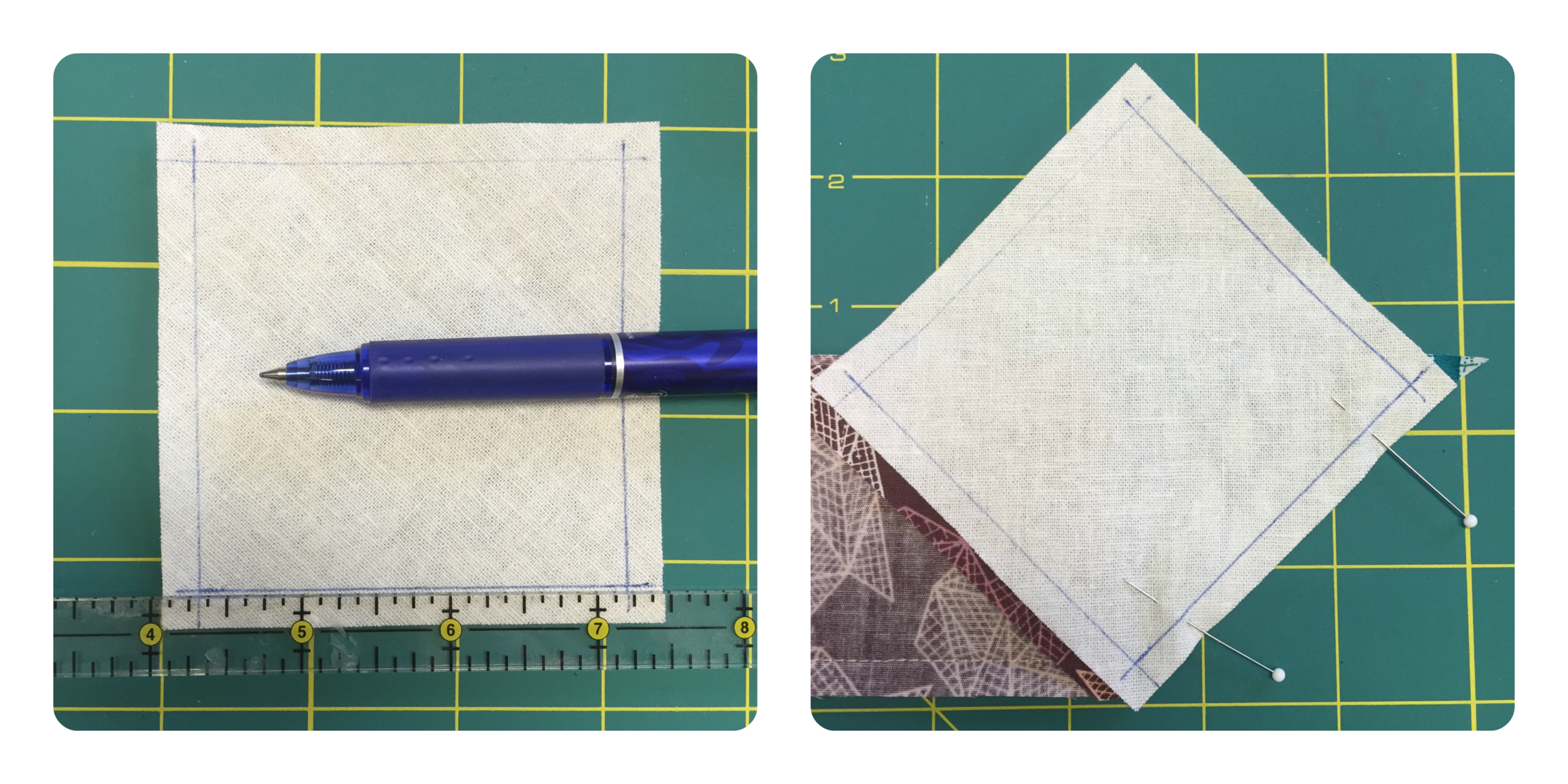Need a fast, easy quilt design? This is it...make it in an evening, quilt it and bind it the next day. Honestly, it's that easy! I designed this pattern to showcase larger print fabrics that seemed just too pretty to cut into smaller pieces. Because you can utilize 14 different prints, I've used it several times at my quilt store when I needed to show how a full line of fabric plays together. I call it Zippy Strippy, and you can see it below in Bonnie Christine's Cultivate fabric that she designed for Art Gallery Fabrics. Measuring at about 60" x 72", it's perfect for a sofa throw or youth bed. If you like it, you'll find the pattern on my downloadable pattern page!
Simple, straight line quilting with 100% organic cotton batting, and co-ordinating fabric on the back kept this quilt soft, drapey and snuggly! If you've ever sewn with Art Gallery's fabrics, you already know the difference their pima cotton makes in all your projects from quilts to clothing!
I used 12 fabrics for the center strips and two for the two side borders. Actually, there is a 15th fabric used for the bias binding! Isn't this little stripe great? We've included it in the kit, along with all the fabric shown for the top. Backing is available separately.
Thanks for visiting! Happy sewing and God bless! Maxie
